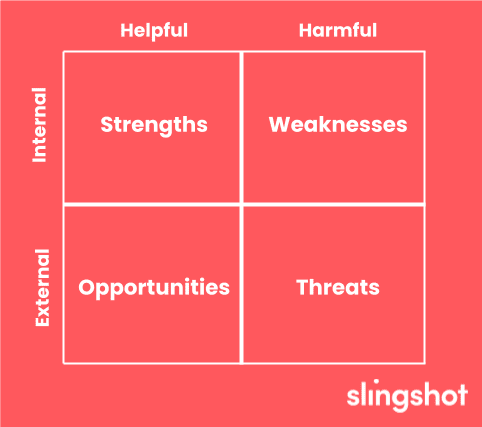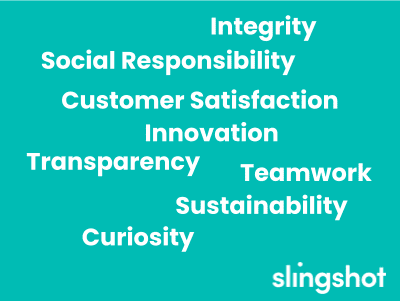Bringing a new product to life within a corporate setting is challenging. Corporations have the staffing, money, IP, and potentially significant competitive advantages over a startup. But brick walls of politics, stubborn decision-makers, and stifling bureaucratic policies can stop a good idea dead in its tracks.
We know some companies are more open to new ideas than others, but even those organizations with the biggest barriers have been cracked before.
This blog post provides seven easy-to-follow tips combining insights from successful innovation stories and practical lessons from past mistakes. By following these strategies, you can take your tech project from an idea to a reality and make it a smashing success for your corporation.
1) Solicit Feedback from ALL Stakeholders, Even if You Don’t Want To
In the corporate world, getting in front of everyone you need to can be tricky, but in the end, it’s critical so everyone feels like they were part of the process from the start. The last thing you want is someone who was not included early, throwing up barriers and objections later in the process.
First, identify your list of stakeholders. This list could include organization executives, department leaders, and even experienced users of an existing system. Ensure to include folks who could raise objections later if they are not heard. Next, spend some time building an interview guide that you’ll use to solicit meaningful feedback.
After completing your stakeholder interviews, you should have a general sense of success and maybe even some great ideas to consider. Incorporate new ideas into your plan.
This approach can avoid resistance and build allies. To build broad support, you should acknowledge everyone’s contributions and include them in your pitch. Continue to follow up with the stakeholders to solicit feedback and share progress.
2) Understand the Competition
If you’re planning to launch a new product, it’s imperative to understand the competitive landscape. Knowing your competitors’ strengths, weaknesses, and market strategies can help you position your product effectively and gain a competitive advantage. Prepare to get your hands dirty; you’ll need to analyze market positioning, pricing models, target audience, and marketing tactics to identify the gaps your product could fill.

Analyzing the current situation can make your pitch stand out by showing how your product fills the gaps in the market. This will help you create a unique value proposition for your executives, giving them a clear understanding of how your solution is different from existing solutions and how it can disrupt the market.
By including a thorough analysis of your competitors, your pitch will inform the higher-ups about the challenges ahead and highlight your project’s strategic positioning. This will give a clear idea of how it can outmaneuver competitors and capture a bigger market share. By following this approach, your pitch can turn into a compelling story, highlighting the competitive edge and market opportunity that awaits the organization’s approval.
3) Assess Risk and Present Intelligent Mitigation Strategies
When trying to come up with something new, there will be risks. Leaders don’t love risk, but it’s part of driving innovation. You‘ll need to understand the risks and show everyone you have a clear plan to handle them.
These strategies can start early by proposing more aggressive customer research, a simple low-cost MVP product, test-market pilots, marketing studies and experiments, and prototype development.
Telling a good story is vital in communicating your strategies. You must create a picture highlighting the key risks and how your risk mitigation strategies can de-escalate situations and potentially protect the company’s money and reputation if things go wrong. By addressing risk head-on, you’ll earn the respect of management. You’ll also position yourself as a capable leader who is proposing a well-considered venture that balances innovation with caution.
4) Build a Case for ROI
One of the most crucial aspects of presenting your tech product is demonstrating how it’ll be worth the investment. Don’t just do quick math to determine the costs; add your best guess revenue numbers to find the ROI.
On the expense side, include ALL the money that will go into it, not just the initial cost to build it. This will include marketing, sales, support, and legal fees, to name a few. You also have to talk about the time and effort everyone on the team will put into it. Do additional people need to be hired for this product to be launched? Include those costs. Make it clear what the investment will truly cost beyond the initial build.
Show them realistic revenue projections. Compare your prices with those of your competitors and demonstrate how your product stands out and is marketable. Base your revenue projections on real numbers and cite sources whenever you can. Use a size of market backed by research. Base your revenue growth on what are realistic customer acquisition channels available to the company.
Forecast your expenses and revenues over a five-year period. Balance the true potential with the actual cost. Numbers must back your argument to fund the project.
5) Be Real
Your optimism about your product must be honest and realistic. To build stakeholder trust, you must also ensure your assumptions are well-researched.

Stay calm with optimism, as this can lead to unrealistic expectations that may not be achievable. More importantly, it will make your pitch less believable. “It’s too good to be true” is real; if it’s all sunshine and rainbows, people won’t believe you. Instead, be clear about the assumptions that underlie your idea and explain why you believe they are realistic and reasonable.
Finally, it’s crucial that you’re prepared to handle tough questions confidently and accurately. That means explaining discrepancies between your proposal and results and being open to feedback and revisions. Following these tips can help you create realistic and compelling projections and build trust with potential stakeholders.
6) Understand Who the Big Decision Makers Are
You may know who your boss is, but do you see the hierarchy of everyone? It’s of the utmost importance to clearly understand the hierarchy within your company. Knowing who holds what position and who is in charge of which department can help you communicate with them effectively and relevantly to their concerns.
It’s more than just discovering who’s who; you should try understanding what they care about and how to get them excited about your product. This task might require research on the individuals and departments you are targeting. It’s crucial to analyze their needs, priorities, and objectives and tailor your message accordingly. Building relationships with these key stakeholders is vital to success. By understanding their perspective and engaging with them, you can establish a rapport that will make them feel like you are on their team.
One of the most effective ways to get the decision-makers on board is to showcase how your technology can help them achieve their goals and make them look good. By highlighting the specific benefits and outcomes that your product can bring to their team or department, you can establish yourself as a valuable asset and build trust and credibility.
7) Align Your Product with the Core Values of the Company
When presenting anything, ensuring that the product aligns with the company’s values and goals is vital. A product that supports the company’s values is more likely to be embraced by everyone.
For instance, if a company values innovation, it must demonstrate how the product is innovative and how it can help it stay ahead of its competitors. Similarly, if the company values customer satisfaction, it should highlight the product’s features that improve customer experience.

By doing this, your company can see how the product can help it achieve its goals (and that you believe in the cause, too!). The key is communicating the product’s benefits to align with the company’s identity so that everyone feels like they are part of the project.
Conclusion
Getting your company to move forward with a new tech product is not easy. Many great ideas have never been realized, but there is hope.
Avoid the temptation to skip steps and embrace the politics and grind. You’ll need to build your case, involve others, and sell your idea repeatedly. A strategy that can work includes involving stakeholders, understanding the competition, answering risk, showing a clear ROI, being real, targeting decision-makers, and aligning your initiative with the company’s values.
Don’t give up. The rewards can be huge and, ultimately, very satisfying for all involved. Let’s get it, folks!
Want More Business-Side Tech Help?

Written by: David Galownia
David excels at propelling Slingshot towards their goals and oversees the strategic direction of the company. He’s been described as ‘intense, driven, caring, and passionate’ both at work and play. At work, he enjoys watching his team explore, imagine, and reinvent to do the best by their clients. At play, he drives Karts at insanely high speeds and scares his wife half to death. It’s all or nothing. Which means he gives it all.

Edited by: Savannah Cherry
Savannah is our one-woman marketing department. She posts, writes, and creates all things Slingshot. While she may not be making software for you, she does have a minor in Computer Information Systems. We’d call her the opposite of a procrastinator: she can’t rest until all her work is done. She loves playing her switch and meal-prepping.




